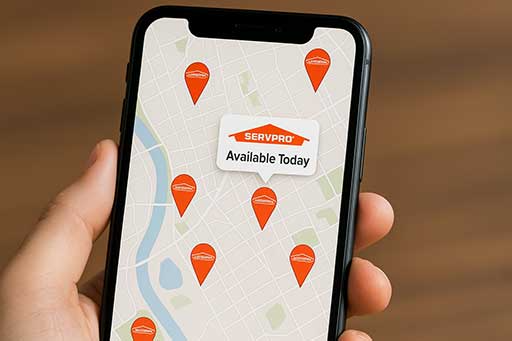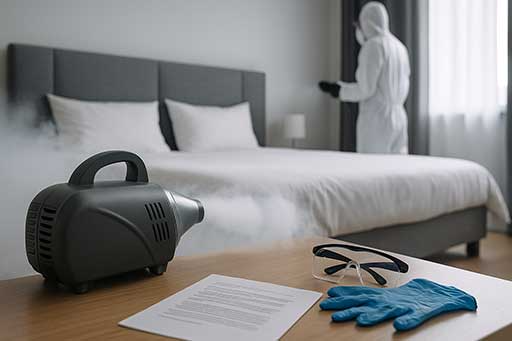
Scope & limits (disclaimer)
This is informational content about typical deep-cleaning practices used by professional providers. It does not sell or route bookings (no phone numbers, ZIP finders, or links to providers), and it avoids proximity phrasing and calls-to-action to maintain RSOC/RAF compliance.
What a deep-clean visit typically covers
Teams generally work from a written scope and room-by-room checklist:
- Kitchen: degreasing of hobs/hoods, backsplashes, appliance exteriors; interiors if pre-agreed; handles and other high-touch points.
- Bathrooms: soil removal, mineral build-up reduction, non-remediation mildew cleaning, ventilation grilles, fixtures, and switches.
- Floors & textiles: HEPA-rated vacuuming; where scoped, low-moisture upholstery/carpet extraction.
- High-touch disinfection: door handles, rails, switches, desk edges, and similar surfaces, following product-label contact times.
Exact tasks depend on the written scope agreed with the provider.
Disinfection protocols (methods, not marketing)
A common sequence is pre-clean → apply disinfectant → respect contact time → avoid cross-contamination (e.g., color-coded cloths, segregated tools for bathrooms vs kitchens). Many providers use EPA-registered disinfectants appropriate to the surface and label. No pathogen-specific efficacy is claimed here; confirm products and instructions with the provider.
Senior-friendly considerations
Where households include older adults or people with limited mobility, crews often adapt: long-reach dusters, low-splash application, slip-aware floor care where appropriate, low-odor/fragrance-free options on request, and emphasis on high-touch zones (banisters, appliance handles, taps). These are operational adjustments, not medical or remediation services.
Scheduling & availability (neutral)
Policies, time windows, and staffing vary by provider. Instead of proximity language or promises, request the written scope and confirm availability windows directly with the company you choose. This helps set realistic expectations without implied guarantees.
Quality assurance you can review
Quality is easier to verify when checklists are visible. Many providers:
- conduct a brief walk-through to align priorities,
- work against a clear task checklist,
- provide an end-of-visit summary noting completed items and any care notes (e.g., drying times).
Policies differ; confirm terms in writing rather than relying on assumptions.
Materials & surface care (examples)
“Thorough” ≠ “harsh.” Common practices include:
- pH-appropriate chemistry on stone; non-etch formulas on glass; peroxide blends in bathrooms where suitable; neutralizers after heavy degreasers.
- HEPA capture plus damp-wipe to limit re-aerosolization of fine dust.
- Fragrance-free options on request for sensitive occupants.
Always disclose delicate surfaces during the walk-through so they can be protected or skipped.
Example scenarios → typical routines (illustrative only)
- Move-in / Move-out: deep kitchen/bath; inside appliances if scoped; baseboards; textiles refreshed per scope.
- Post-construction dust: multi-pass HEPA plus damp-wipe of horizontals and vents to reduce fine particulate.
- After household illness: high-touch surface cleaning and disinfection by label contact time; soft-surface refresh if included.
- Pet or smoke odor: targeted textile cleaning and odor-control steps using controlled moisture and extraction.
These are examples, not guarantees; outcomes depend on materials, soiling level, and agreed scope.

What to expect on the day (descriptive flow)
- Access check & walk-through to align on priorities and special surfaces.
- Protection where appropriate (corner guards/floor runners).
- Execution per scope: degreasing, HEPA vacuuming, low-moisture extraction where specified, disinfection by contact time.
- Completion notes: checklist review and any care guidance (e.g., keep a floor dry for a set time).
Actual steps vary by provider and scope.
FAQs (informational)
Is this mold remediation?
No. References here relate to non-remediation cleaning of visible mildew. For suspected mold growth or structural moisture issues, consult a remediation specialist.
Do crews clean inside appliances?
Only if pre-agreed in the written scope (e.g., oven, fridge, microwave).
Do I have to be present?
Some providers request a person for the initial walk-through and the end-of-visit review; policies vary.
Pets and fragile items?
Notify the crew during the walk-through so they can plan containment or skip items on request.